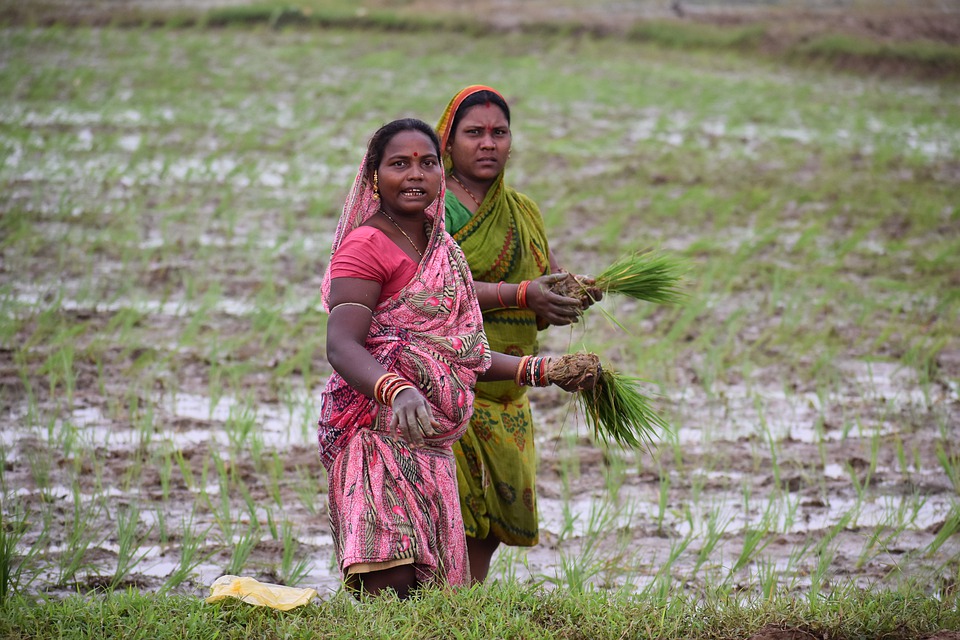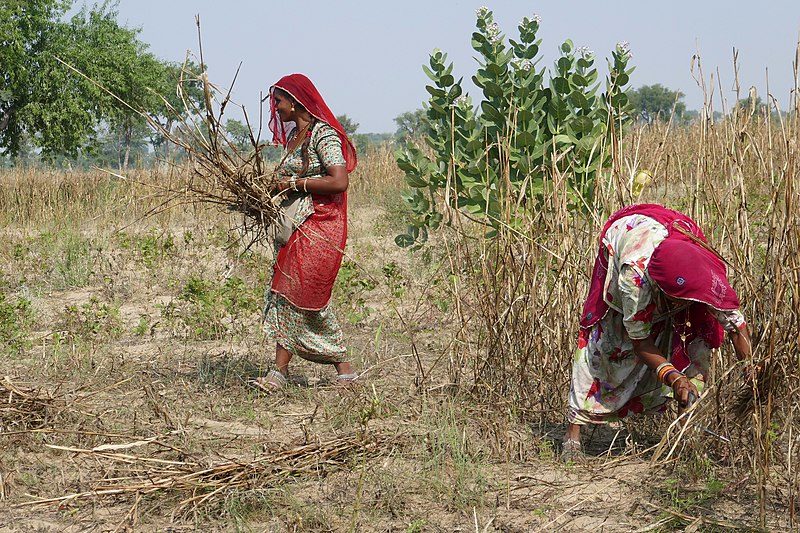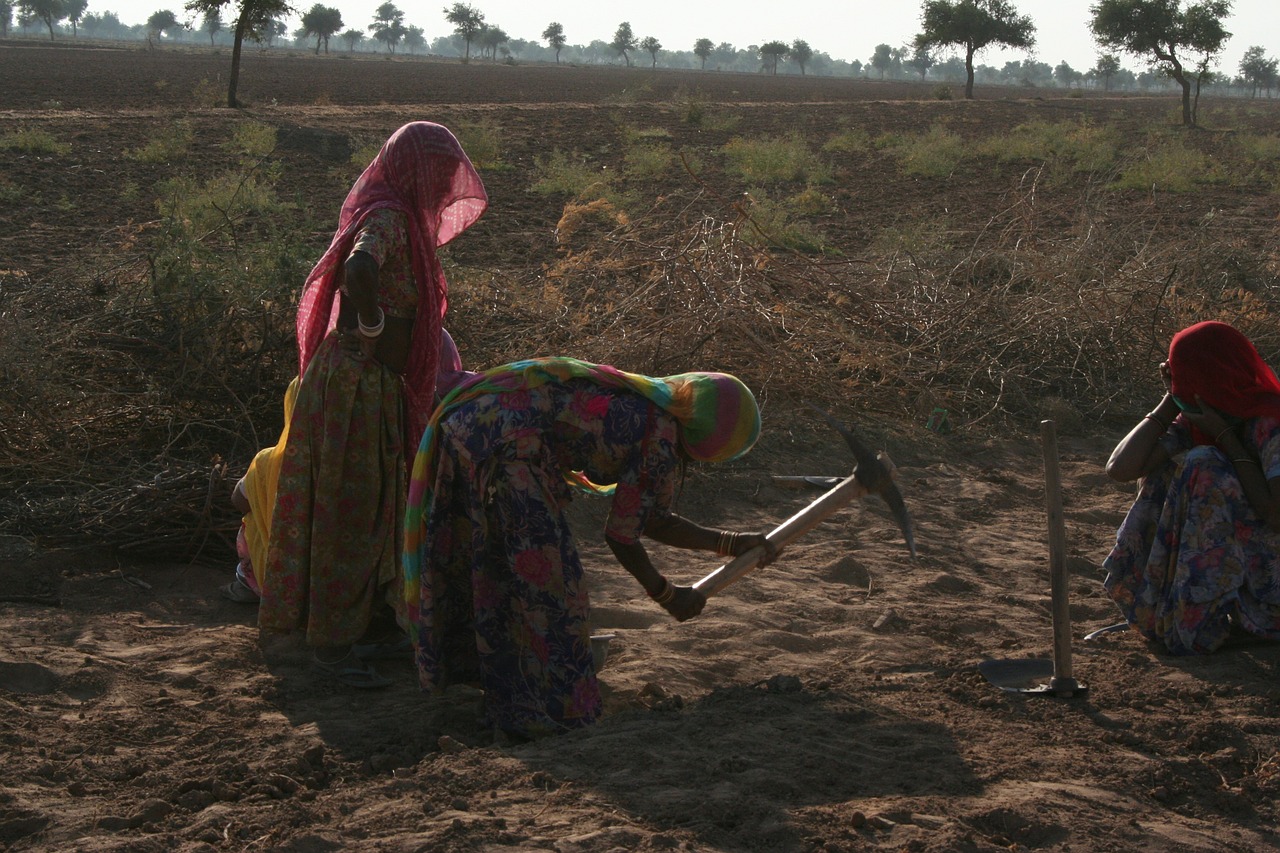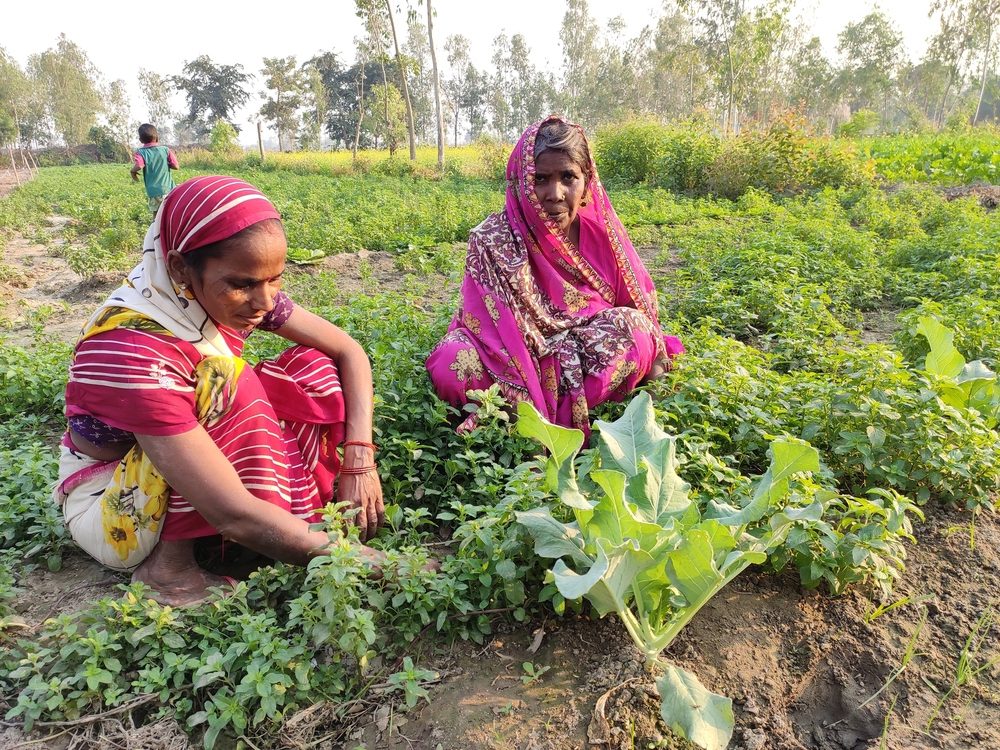Women undertake most of the laborious work in the fields, yet they are not called farmers
Despite the amendment in the Hindu Succession Act in 2005, whereby equal rights were awarded to daughters in their fathers’ ancestral property, women are not allowed to own agricultural land

Rajasthan
Uma Devi, a farmer, lives in Kabir Nagar in Pachpadra tehsil in Rajasthan’s Barmer district. After the death of her husband in 1987, she single-handedly took care of her daughter. She worked relentlessly on the agricultural land her husband had left behind. With meagre earnings, she not only took care of the household but also educated her daughter. The daughter is happily married now. It was the agricultural land that helped Uma stay independent. She was relying on it for her old age until one day she learnt that she was no longer the legal owner of the land.
“During the drought year, when I did not receive compensation from the government, I contacted the Land Revenue Officer in our village. To my shock, he told me that I do not own the land. When I enquired, I got to know that a few years ago, my husband’s relatives had discreetly and illegally transferred the land in their name,” said Uma Devi.
Following the village rules, instead of going directly to the court, she presented her case before the Gram Panchayat. “My husband’s relatives said that I cannot claim succession rights to my husband’s land as I do not have a son. This is the reason they gave in front of the village committee which approved of their illegal acquisition of the land that rightfully belonged to me,” said Uma Devi, who later fought the case in the district court and won her rights over the land.
Uma Devi is not a case in isolation. There are thousands of women in rural Rajasthan who have fallen prey to the community-governed patriarchal rulebook of property succession and inheritance.
In Navatala village of the same tehsil, Narayani Devi was thrown out of the house by her in-laws after the death of her husband. “They wanted me removed from their way so I could not claim the agriculture land that was rightfully mine,” shared Narayani Devi who was forced to work as a farm labourer in her paternal village after this incident.

Unlike Uma Devi, she could not fight the case at the village or district level. Even in her father’s family, she did not inherit any land as everything was distributed among her brothers. The same tradition is followed across rural areas in Rajasthan despite the amendment in the Hindu Succession Act in 2005, whereby equal rights were awarded to daughters in their fathers’ ancestral property.
Women in rural India undertake most of the ‘laborious’ work in the agriculture fields – they get into the field early in their lives and never retire. However, to date, millions of hard-working women have not been recognised as farmers as they do not own the land. To be precise, they are not allowed to own the land because of the rigid patriarchal system, which continues to dominate the rural and remote regions of the country. Rajasthan is one such state where women’s rights are compromised at different levels, in different ways.
“Soon after my marriage, I had started working on my husband’s land. I invested my physical and mental labour while contributing to 70% of the agricultural work on that field, every day. I took care of the animals besides taking care of household chores. Yet, I am not recognised as a farmer because I do not own the land,” shared sixty-year-old Achki Devi, who has spent her entire life working on her husband’s farm, yet is not considered a farmer.
There are millions of Achki Devis in our country who have endured several agriculture seasons – their hard work and sweat is the manure that nourished seeds and transformed the barren land into a productive one. Their eyes have seen several droughts to understand the importance of a good monsoon. They can tell you about the weather just by looking at the sky – their eyes have seen it all. But because, in the past, they could not share the same status as men, they were never called a farmer and the practice continues in villages to date.

No land, no recognition
This patriarchal practice has received indirect support from the government policies that fail to provide support to women farmers. At the central level, the government has recognised 3.6 crore women as ‘cultivators’ based on the 2011 Census report. However, as per a report published in ‘The Wire’, the issue lies between the state and central government’s different definitions of a ‘farmer’.
The report says that “the census calls anyone who operates a piece of agricultural land a ‘cultivator’. Operational land is land used by anyone for agricultural production – irrespective of whether the person using it owns it or not. The land is a state subject and the state governments, on the other hand, consider only people with a land title as farmers. So, even though 3.6 crore women have been labelled ‘cultivators’, this does not mean they are considered farmers by the government.”

What does the data tell us?
So, how many women across India actually own agriculture land? As per the IndiaSpend website, “73.2% of rural women workers are engaged in agriculture while only 12.8% women own land holdings.” Looking at the last two census reports, although the percentage of women workers in agriculture has increased, but the percentage of women farmers owning agricultural land has decreased.
The Tenth Agricultural Census 2015-16, that was released in 2018, claims that the average size of agriculture landholding declined to 1.08 hectare in 2015-16 from 1.15 hectare in 2010-11. And, in terms of the operated area, women’s participation increased from previous 10.36% to 11.57%. Researchers believe that the participation of women in agriculture has increased due to the decreasing average size. The report suggests that the number of women farmers in 2010-2011 was 12.79% — 1.76 crore — which increased to 13.87% (2.2 crore) in 2015-2016. During this time, their ownership in cultivated land increased from 10.36% to 11.50% which can hardly be defined as an improvement.
On one hand, women are not allowed to own land and because they do not have ownership, they are not recognised as farmers. In the absence of distinct recognition as farmers, women cultivators remain ineligible for several schemes that state and central governments have announced for improving the status of the agriculture sector. The organisations working for the rights of women farmers have been demanding identity cards for women for a long time now. They believe that women working on agricultural land should be provided with a relevant identification card that will make them eligible for schemes aimed at improving the status of farmers in India. After all, these schemes are designed keeping in mind the challenges faced by farmers and not their gender.
(All names have been changed in the story)
This article has been sourced from Charkha Features.

